Our passion for wildlife conservation can be creatively expressed through the art of poster drawing. By crafting posters that feature stunning images of the world’s biodiversity, we can engage others and inspire action to protect our planet’s precious ecosystems.
Tailoring these visuals in a way that speaks to the heart of conservation, we are often drawn to the powerful imagery that can convey the message far more effectively than words alone. Free to download resources are available that feature a range of illustrations and formats, providing us with an accessible starting point to share our message across diverse platforms.
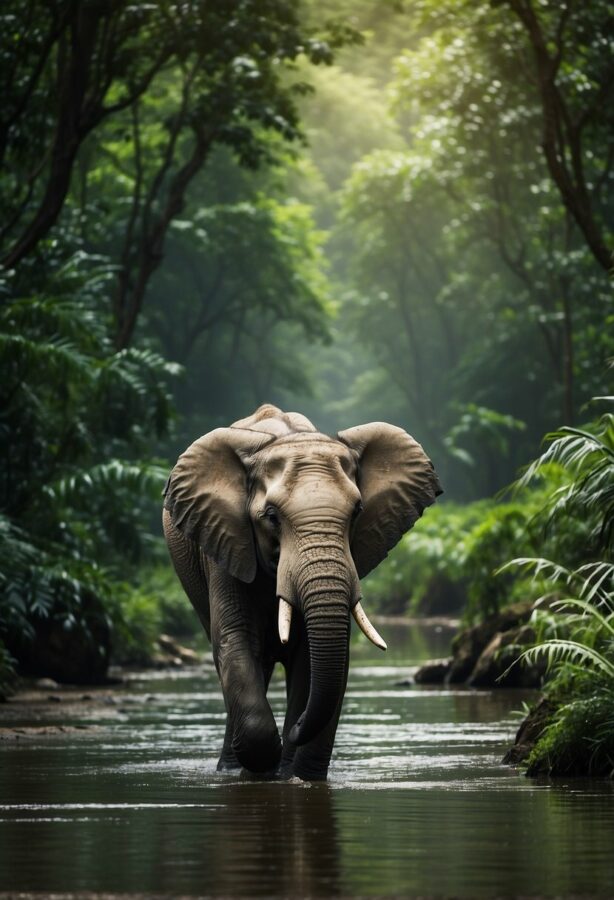
As custodians of nature, we have the power to bring about change through our artistic contributions. Whether it be through collections of carefully curated illustrations that showcase the variety of species inhabiting our world, or original posters that highlight the urgency of conservation, our artwork can mobilize communities and foster a deeper appreciation for the natural world. By selecting the right images that resonate with people and represent the beauty of biodiversity, we can make our conservation message clear and compelling.
To make the most impactful statement with our posters, it is important for us to consider the format and composition of our artwork. High-quality, expressive illustrations are key to capturing the public’s attention. Whether we are authors of our own images or we are selecting from collections of existing artwork, we must always respect copyright and attribute the appropriate creators.
Incorporating downloadable images that are both striking and emblematic gives our posters the power to educate and remind us of our shared responsibility in preserving the planet’s wildlife. With every poster we create, we’re not just drawing an image; we’re sketching the future of our biodiversity.
See Related: Fascinating Animals With Horns: From Rhinos to Ibexes
Choosing Your Message

When we create a wildlife conservation poster, selecting a powerful message is crucial for impact. How do we decide on what message to convey?
Firstly, we should define our conservation goal. Are we raising awareness for endangered species, educating the public on wildlife preservation, or perhaps supporting a specific campaign from organizations like the World Wildlife Fund (WWF)? Once we pinpoint our intent, we can focus our visual narrative.
Here’s a simple guide to shaping our message:
- Identify the Core Issue: Whether it’s habitat loss or illegal poaching, pinpoint the specific conservation challenge.
- Target Audience: Understanding our audience helps tailor the message to their interests and values.
- Educational Aspect: Ensure our message has an educational component to inform viewers about the importance of conservation.
- Call to Action: Inspire action by clearly stating what steps viewers can take to help.
Our message should be reflective of our passion for the cause. By using symbols and metaphors related to conservation and endangered species, we can create a strong emotional resonance. For example:
- A polar bear on a shrinking iceberg could symbolize climate change’s impact.
- A tiger behind bars may represent the plight of animals in captivity.
DIY Messaging Tips:
- Utilize bold colors to draw attention to key elements.
- Incorporate real-world statistics to underscore urgency.
- Weave in authentic stories of species or habitats to create a personal connection.
Remember, our posters are more than just art; they are a call to the conscience to protect our world’s invaluable wildlife. Let’s use our creativity to make a difference.
See Related: Feline Wall Art: Curating a Cats Wallpaper Collection
Selecting the Right Colors

When we embark on the journey of creating wildlife conservation posters, our color choices play a pivotal role. They’re not just shades and hues; they’re the silent ambassadors of our message.
We start by defining the mood and tone we wish to set. Should our artwork elicit hope, urgency, or a reflective response? The color palette we select is critical to this end.
Consider the following when choosing colors:
- Natural Realism: We strive for colors that mirror nature. Authentic tones help in accurately representing the species we’re showcasing.
- Emotive Value: Colors like blue and green often evoke a sense of calm and are associated with nature, while red can signify danger or urgency.
Here’s a quick guide to color selection:
Emotion | Colors | Suggested Application |
|---|---|---|
Optimism | Yellows, Light Greens | Sunlight, Foliage |
Urgency | Reds, Oranges | Threatened Species |
Calm | Blues, Deep Greens | Water, Sky |
Vectors and Ready-made Resources:
- Vectors: Sites like Freepik offer a myriad of vector graphics. Look for contributions from artists such as pikisuperstar or graphicjoy92 for their wildlife and nature-themed collections.
- Freepik: A resource-rich platform for finding vector images that capture the essence of various species and landscapes.
Remember, our posters should do more than just decorate a space; they must converse with the viewer. Subtle color gradients can depict complex ecosystems, while bolder contrasts may highlight the plight of endangered species. Through thoughtful color selection, we turn our posters into compelling narratives that inform and inspire conservation efforts.
By engaging viewers with the right colors, we not only draw attention to wildlife but also encourage a connection that can spur action towards preservation. Let us harness the power of colors to paint a brighter future for all species.
Sketching Your Design
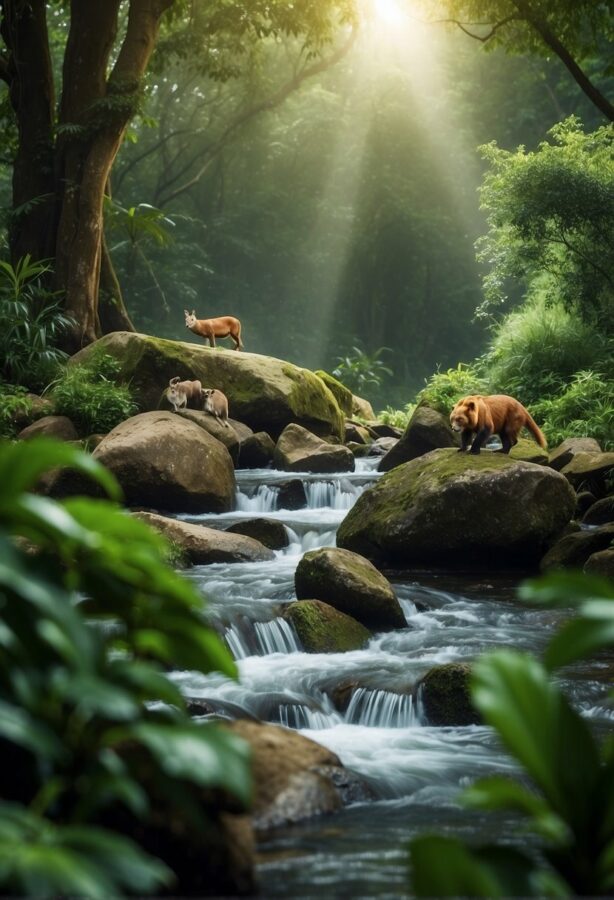
When we embark on the journey of creating a wildlife conservation poster, we start with a basic sketch. This initial phase is where our imagination meets paper, giving us the freedom to explore ideas without restriction. Sketching is a powerful tool, allowing us to outline the central image that will carry our conservation message.
Firstly, we opt for a gesture drawing approach, capturing the essence and movement of wildlife. We focus on the form and fluidity, rather than intricate details. This helps us convey the dynamism of the animals we are advocating to protect.
To infuse life into our posters, we incorporate elements of the animal’s habitat using natural colors. We select images that resonate with our message, ensuring they are either royalty-free or in the public domain. Sites offering free photos or PSD files can be incredibly helpful resources for reference or elements to integrate into our poster design.
Here’s a simple guide to help us sketch effectively:
- Start with light pencil strokes to lay down the basic shape.
- Refine the silhouette, gradually adding necessary details.
- Use shading techniques to highlight form and create depth.
Remember, our goal is to create an impactful visual that captures attention and sparks a conversation about wildlife conservation. Let’s use our collective creativity for a cause that needs our voice. With every line we etch, we are not just sketching; we are setting the stage for change.
Adding Impactful Text
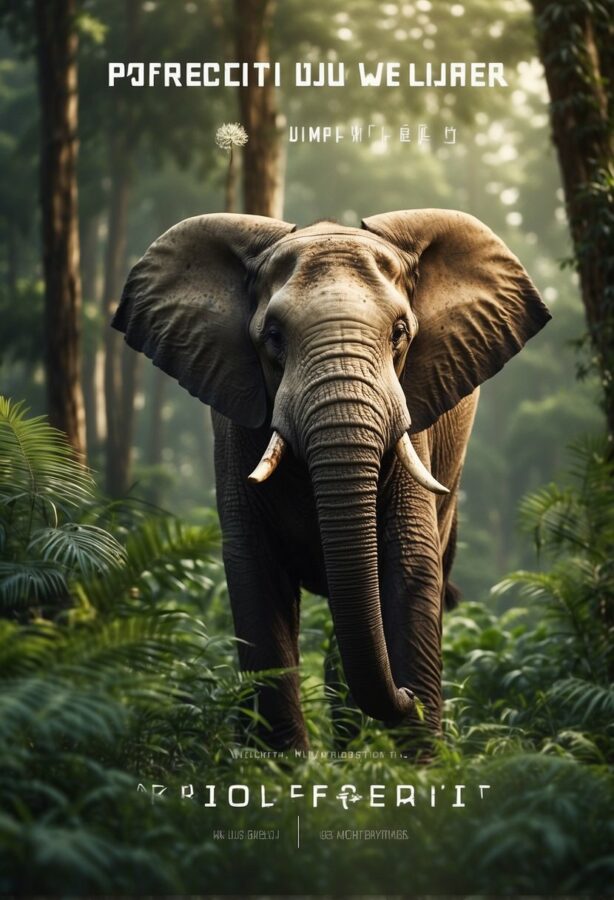
When we craft wildlife conservation posters, the text we choose is as vital as the visuals. Words have power—they can inspire action and convey our passion for conservation. It’s crucial to select potent and emotive language that resonates with viewers and impels them to learn more.
Key Components For Text In Conservation Posters:
- Message Clarity: Keep our message clear and concise. People should grasp our conservation goals swiftly.
- Emotive Appeal: Use compelling words that stir the audience’s emotions, fostering a meaningful connection with wildlife.
- Educational Value: Integrate factual information that educates about the plight of wildlife, ensuring our poster is informative as well as persuasive.
DIY Tips for Text Crafting:
Brainstorm Keywords:
- List words related to conservation that evoke strong feelings or actions, such as “Protect,” “Preserve,” or “Endangered.”
Short and Bold Statements:
- Use short, impactful sentences or questions that grab attention, such as “Will You Stand Up for Wildlife?”
Call to Action:
- End with a clear call to action, like “Join the Cause” or “Learn to Help.” This invites immediate response or participation.
We might also incorporate enticing giveaways that reward engagement, from stickers to bookmarks, each bearing a conservation message to keep the dialogue ongoing beyond our posters. By harnessing the persuasive power of well-chosen words, our wildlife conservation posters become not just art but a rallying cry for change.
Drawing Attention to Detail
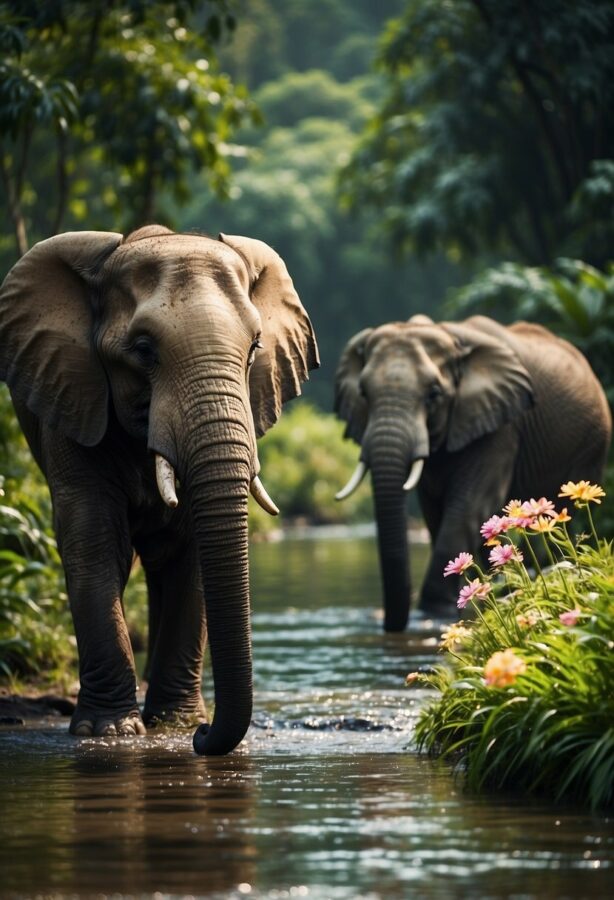
When creating conservation posters, we know that details are crucial. They not only capture the beauty of wildlife but also help convey the urgency and importance of conservation. Let’s focus on how to elevate our wildlife images.
Choose Your Species Wisely: A tiger’s striped pattern, for example, embodies the majesty of wildlife. Depicting such iconic species influences the audience to reflect on the plight of these magnificent creatures and ignites a passion for protecting them against wildlife crime.
Be Accurate: Research your chosen species. The authenticity of an animal’s features can draw people in and build trust in the conservation message.
Use Symbolism: When crafting our images, we can incorporate symbols to subtly hint at the issues. For example, a cage drawn behind a tiger might symbolize their threat from poaching.
Highlight the Impact of Human Activities: Artfully illustrating elements like deforestation or pollution within a poster can visually represent the challenges faced by wildlife.
Incorporate DIY Techniques:
- Sketch lightly before finalizing your drawing.
- Use shading to bring depth and life to your creatures.
- Integrate background elements that speak to the ecosystem or threats involved.
By paying attention to the finer details, we can create powerful and inspiring images that don’t just depict wildlife, but tell their stories. Our posters then become not just art, but a rallying cry for conservation, beckoning the viewer to join us in our quest to protect these invaluable species and their habitats.
See Related: Nature’s Canvas: Stunning Wildlife Backgrounds for Your Devices
Harnessing Symbolism

In our quest to advocate for biodiversity and conservation, we often turn to the arts, utilizing symbolism in our wildlife conservation posters to convey powerful messages. Endangered species, often the mascots of our cause, are more than just subjects; they carry profound meaning as icons of our planet’s fragile ecosystems.
Key Symbols & Their Meanings:
- Pandas: A universal symbol of the WWF and conservation efforts. Pandas evoke a sense of endangered beauty and the need for sustainable living.
- Tigers: Represent the wild’s untamed majesty and the urgent struggle against habitat loss and poaching.
Tips for Incorporating Symbolism:
- Choose Your Subjects Wisely: Select an emblematic species that resonates with your message. Consider its status in nature to highlight conservation needs.
- Amplify Through Color: Use colors intentionally to evoke emotions. For instance, blues and greens for tranquility and reds for urgency.
- Integrate Natural Elements: Weave in natural elements like forests or oceans to provide a context that underscores the importance of preserving natural habitats.
- Simplicity is Key: Sometimes a simple, solitary figure speaks louder than a complicated scene. A lone elephant can symbolize the vastness of the issue of poaching.
By embedding such imagery into our art, we make a silent yet impactful plea for the preservation of our natural world. It is our hope that these symbolic representations stir a desire to protect and sustain wildlife conservation efforts. Through art, we can inspire, educating viewers on the intrinsic value of each creature and the critical roles they play in our collective well-being.
Highlighting Endangered Species
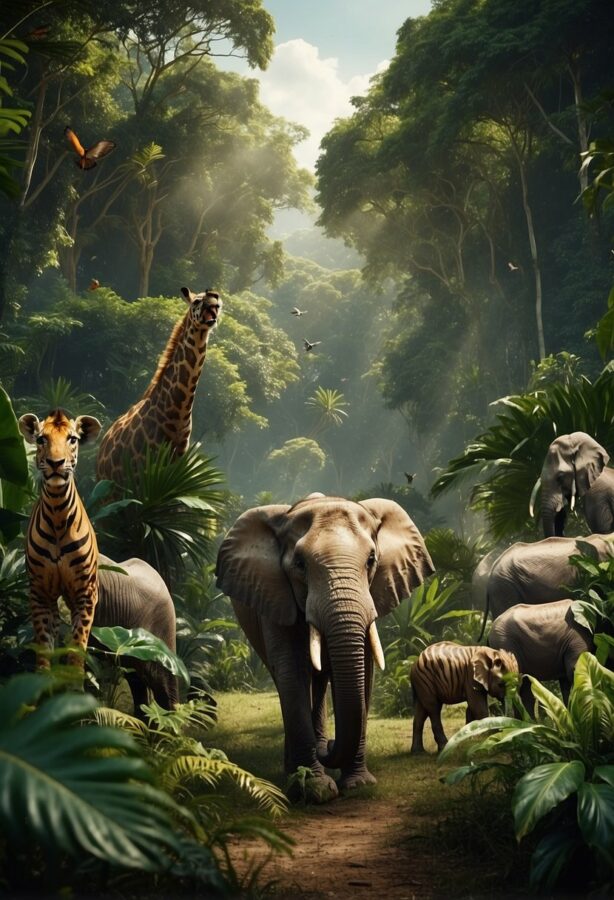
When we create artwork focused on wildlife conservation, one powerful approach is to shine a light on endangered species. By featuring these at-risk creatures in our conservation posters, we not only raise awareness but also inspire others to participate in their protection.
Let’s take tigers as an example. A striking poster of a tiger can serve as a strong visual reminder of the species’ majesty and its precarious standing.
To do this, we might use bold and contrasting color palettes to make the image of the tiger stand out. Integrating subtle background motifs that reflect its habitat stresses the importance of ecosystem conservation.
Here are some DIY tips for creating impactful species posters:
- Select an Endangered Species: Choose an animal or plant that resonates with you, and which you feel needs urgent attention. This personal connection can translate into more persuasive artwork.
- Educational Elements: Include brief, informative captions that teach the viewer about the species’ status, habitat, and why it’s endangered.
- Simplify Your Message: Use clear, evocative imagery paired with a succinct conservation message. This can be more impactful than an overly complex design.
- Incorporate Symbolism: Symbols related to conservation, such as a leaf for growth or chains for restriction, can add a layer of meaning to your artwork.
By circulating these posters, we do more than create art; we foster a dialogue on wildlife conservation and education. Each poster becomes a beacon of awareness, guiding more eyes towards the plight of endangered species and what can be done to aid their survival.
See Related: Unleashing the Wild: Exploring the World of Fierce Animals
Creating a Call to Action
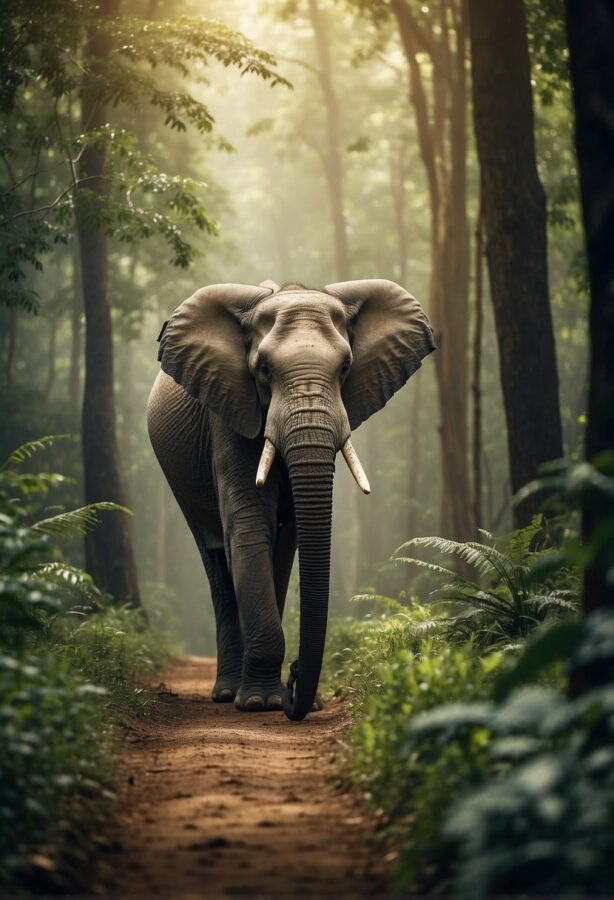
When we approach the creation of a wildlife conservation poster, our goal is to inspire action and foster a deeper understanding of conservation issues. Here’s how we can craft a message that spurs both thought and action:
Select a Focal Species or Habitat: Choose an endangered species or threatened habitat to be the centerpiece of our poster. This visual anchor will serve as a powerful symbol for our conservation efforts.
Incorporate Actionable Information: Clearly state specific actions the audience can take. This might include phrases like “Support local wildlife,” “Reduce plastic use,” or “Plant native species.”
Make Use of Emotion: Tap into the emotional connection people have with wildlife. A well-placed image or phrase can evoke empathy and a sense of urgency.
Optimize for Visibility: If you’re a small business, use Google Merchant Center to promote your poster. This ensures it reaches a wider audience and potentially boosts sales for related conservation merchandise.
Integrate Sustainable Practices: Show that our business prioritizes sustainable methods in both the creation and distribution of our posters.
Remember, a single poster can resonate deeply, turning viewers into active participants in the cause for wildlife conservation. By crafting our message with care, we not only raise awareness but encourage meaningful steps toward preserving the diverse and vibrant tapestry of life on our planet.
Sharing Your Poster for Maximum Impact
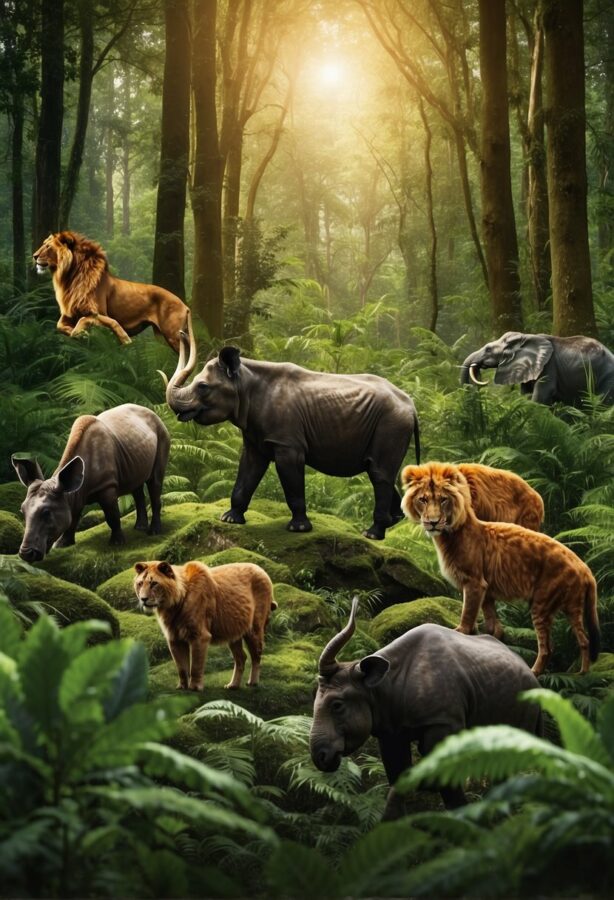
Creating a wildlife conservation poster is just the beginning; effectively sharing it can amplify its impact significantly. We need to consider the best platforms and strategies to get our powerful message to as many eyes as possible.
Leveraging Social Media Platforms
In today’s digital world, social media is a pivotal battleground for conservation awareness. We can utilize platforms like Instagram, Facebook, and Twitter to showcase our posters. By tagging influencers and using relevant hashtags, we ensure that our conservation message penetrates deep into public consciousness. Creating a digital code, like a QR code, to embed in our social media posts can lead the audience to our website or a donation page, further deepening their engagement.
Maximizing Outreach with Interactive Displays
Interactive displays can attract more foot traffic and engage viewers on a deeper level. We can transform our posters into interactive experiences by setting them up at local events, perhaps with a bridal show booth setup for maximum visibility.
Integrating elements that encourage participation, such as giveaways or a scavenger hunt, can make our message memorable. Consider linking these displays to our digital platforms through scannable QR codes that offer more information or a call to action.
Engaging the Community in Conservation Efforts
Our community is our most powerful ally. By organizing local workshops or exhibitions, we can display our posters and encourage community members to create their own.
It’s a chance to talk about the importance of wildlife conservation personally and call for action. Offering a DIY art session on crafting effective conservation messages can inspire more people to become vocal advocates for the cause.
Utilizing Digital Tools to Expand Reach
In addition to physical displays, we should not overlook the potential of digital tools. The Google Merchant Center allows us to promote our posters to a wide audience with precise targeting.
By attaching a little digital code or a QR code to our posters, we make it easy for potential clients to learn more about the cause. These digital leaps can turn a simple poster into a movement, extending our outreach beyond local confines to a global stage.
In sharing our poster, our goal is to create a ripple effect of conservation awareness and action. Through strategic promotion, interactive elements, community engagement, and digital integration, we work to ensure that our wildlife conservation message is not just seen, but acted upon.
Related Resources: